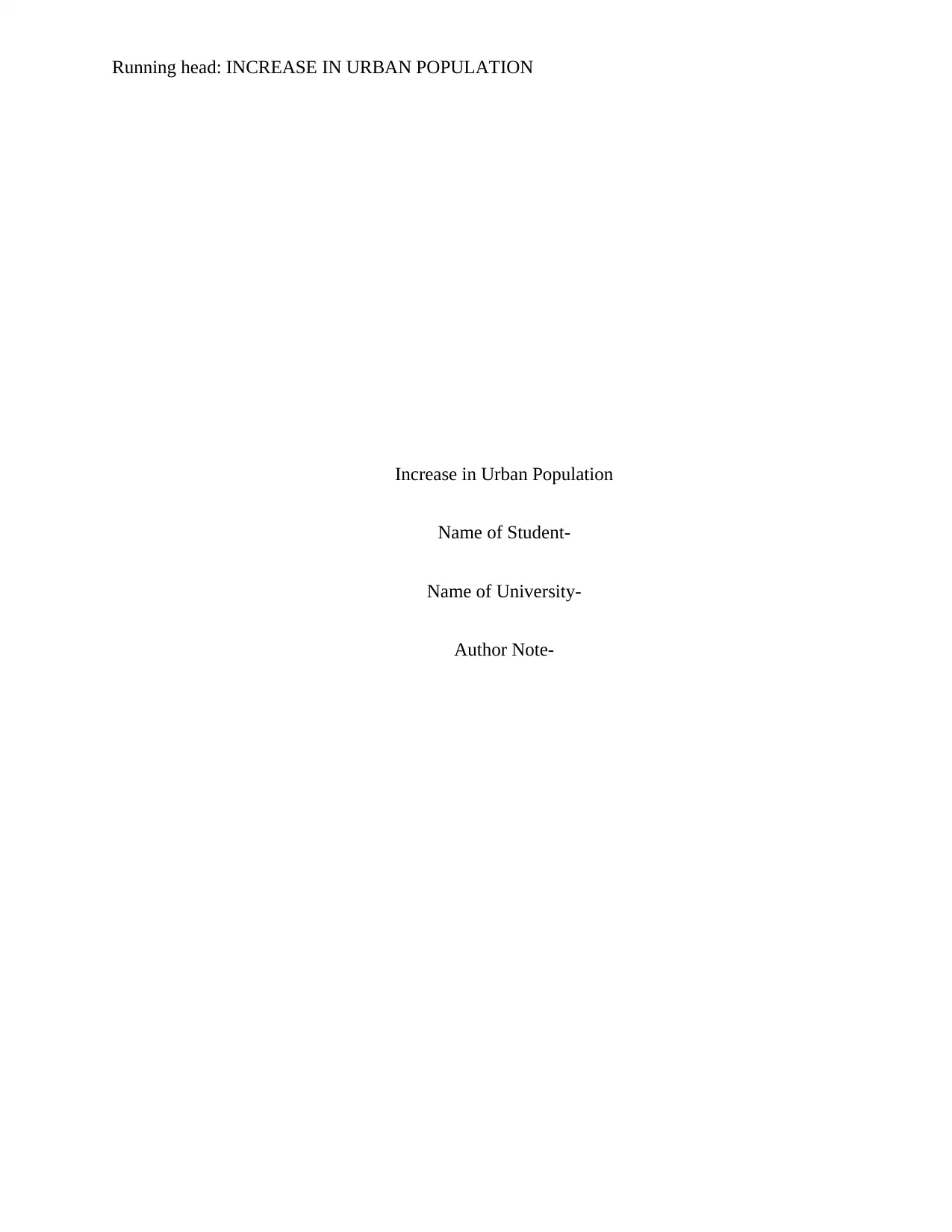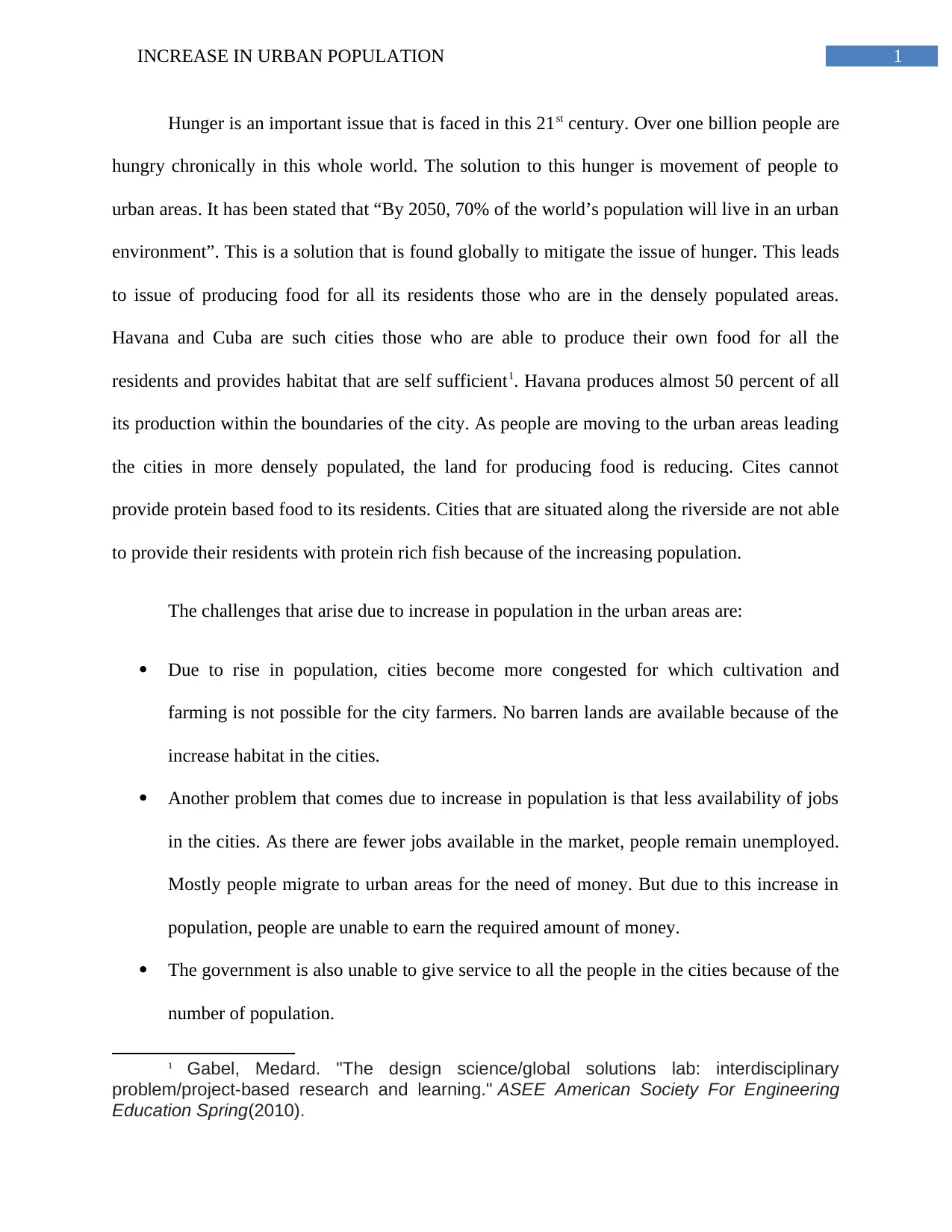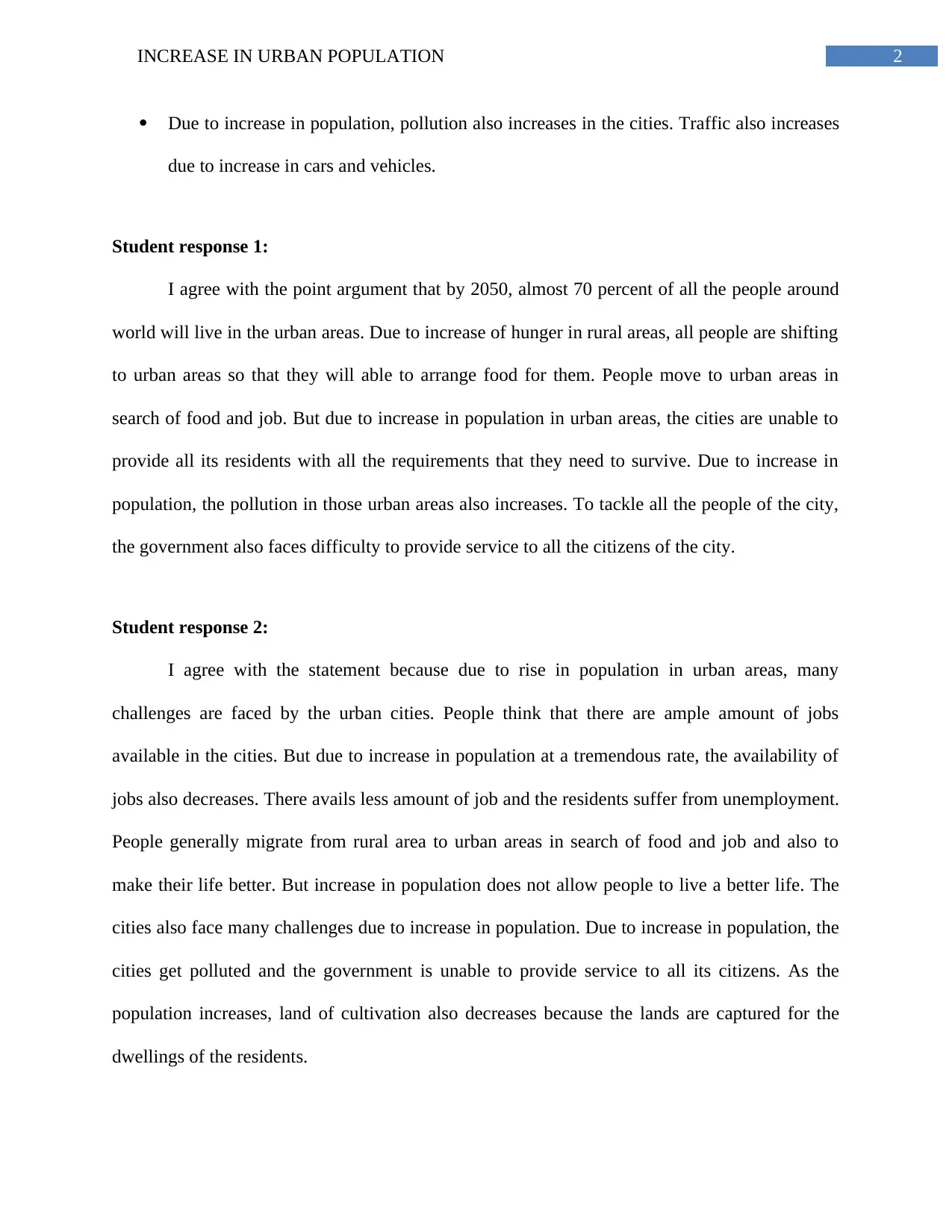Analyzing Challenges and Solutions for Urban Population Growth Issues
VerifiedAdded on 2020/05/11
|4
|721
|235
Report
AI Summary
This report analyzes the multifaceted challenges associated with the increasing urban population. It begins by highlighting the global trend of urbanization, projecting that a significant portion of the world's population will reside in urban areas by 2050. The report then discusses the strain this places on resources, particularly food production, and cites examples like Havana's self-sufficient urban farming initiatives. Key challenges identified include increased competition for resources, reduced arable land, job scarcity, and the strain on government services. The report also addresses the negative environmental impacts, such as pollution, and discusses student perspectives on these issues. The references include insights into interdisciplinary problem-solving in urban development. Overall, the report underscores the urgent need for sustainable urban planning and innovative solutions to address the complex problems arising from rapid urban population growth.
1 out of 4











![[object Object]](/_next/static/media/star-bottom.7253800d.svg)